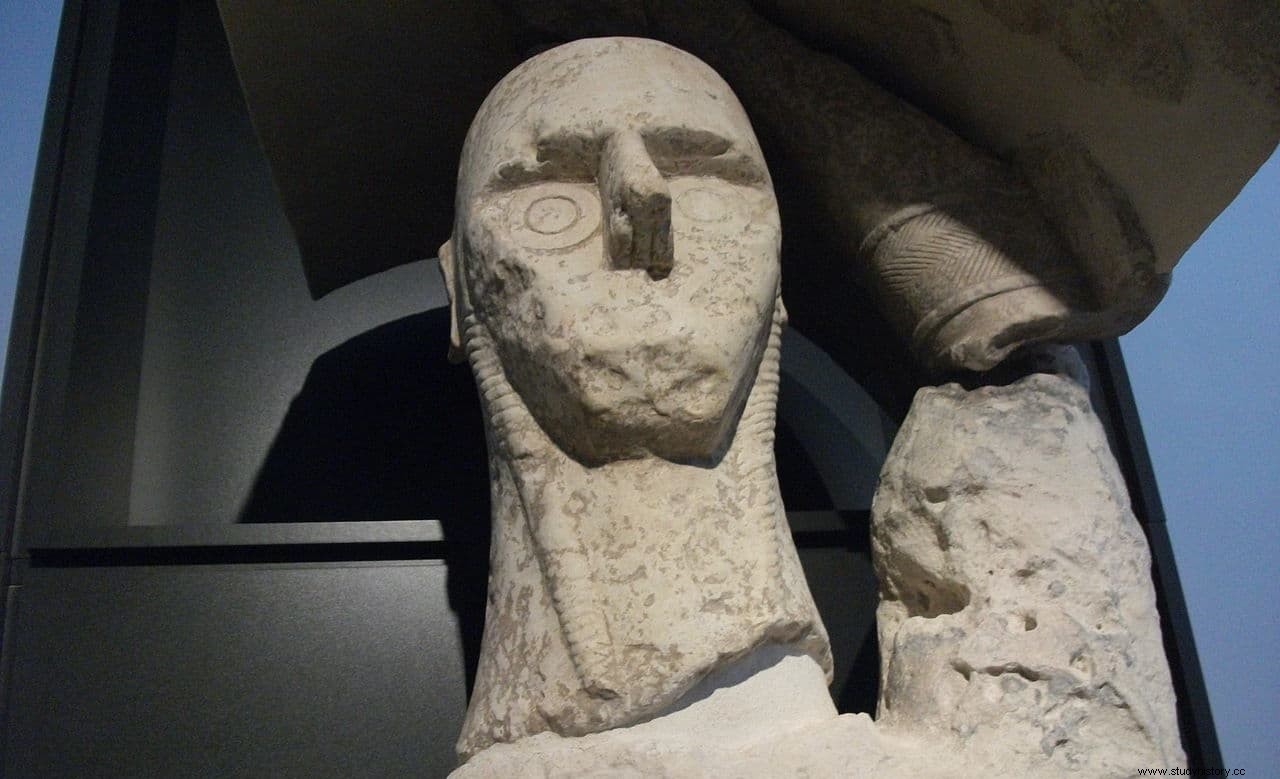The Giants of Mont’e Prama they are sculptures of between two and two and a half meters created by the Nuragic civilization that inhabited the island of Sardinia between the 18th and 2nd centuries BC
Researchers have not yet agreed on whether these Nuragics originated from the island itself or, on the contrary, they can be related to the Sea Peoples, who devastated the Mediterranean coast between the 14th and 13th centuries BC. In the latter case, they would have arrived in Sardinia after being defeated in their failed invasion of Egypt between the 13th and 12th century BC

The discovery in 2014 of two complete Giants seems to shed some light on this, or perhaps complicate things further.
The Giants or Colossi, as some scholars have called them, were found in 1974 near the town of Cabras, to the west of the island. They represent warriors, archers and fighters with shields. One of its most outstanding features, in addition to its large size, are the eyes formed by two concentric disks.
It is not known either if they represent mythological heroes or gods. The discovery was made next to a tomb from the same period, so it is believed that they were arranged around it as guardians. But this is not too clear either. They could well have belonged to a nearby temple not yet found.

In March 2014, after 40 years of study and restoration, the Giants were exhibited to the public at the National Archaeological Museum of Cagliari and at the Goats Museum.
In total, with the more than five thousand pieces found, some 33 Giants could be reconstructed. The two new pieces were found in September of this year, with the particularity that they are complete and intact. A third may be buried deeper based on radar surveys.
The novelty that these two new Giants bring is that, unlike those found previously, they carry their shields attached to their sides and not on their heads. A position that is very similar to that of a small Nuragic bronze from the same period found in Viterbo (north of Rome), whose date is known with certainty:9th century BC. If the connection were to prove true, we would be looking at the oldest example of colossi (giant statues) found in the Mediterranean, several centuries older than the Greek colossi.
And there is even more, because scholars believe that the Giants must have worn masks, very similar to those used today in traditional celebrations in Sardinia. Although these were not exactly the same, that would show that some ancestral rites and traditions have survived on the island for more than 3,000 years.
